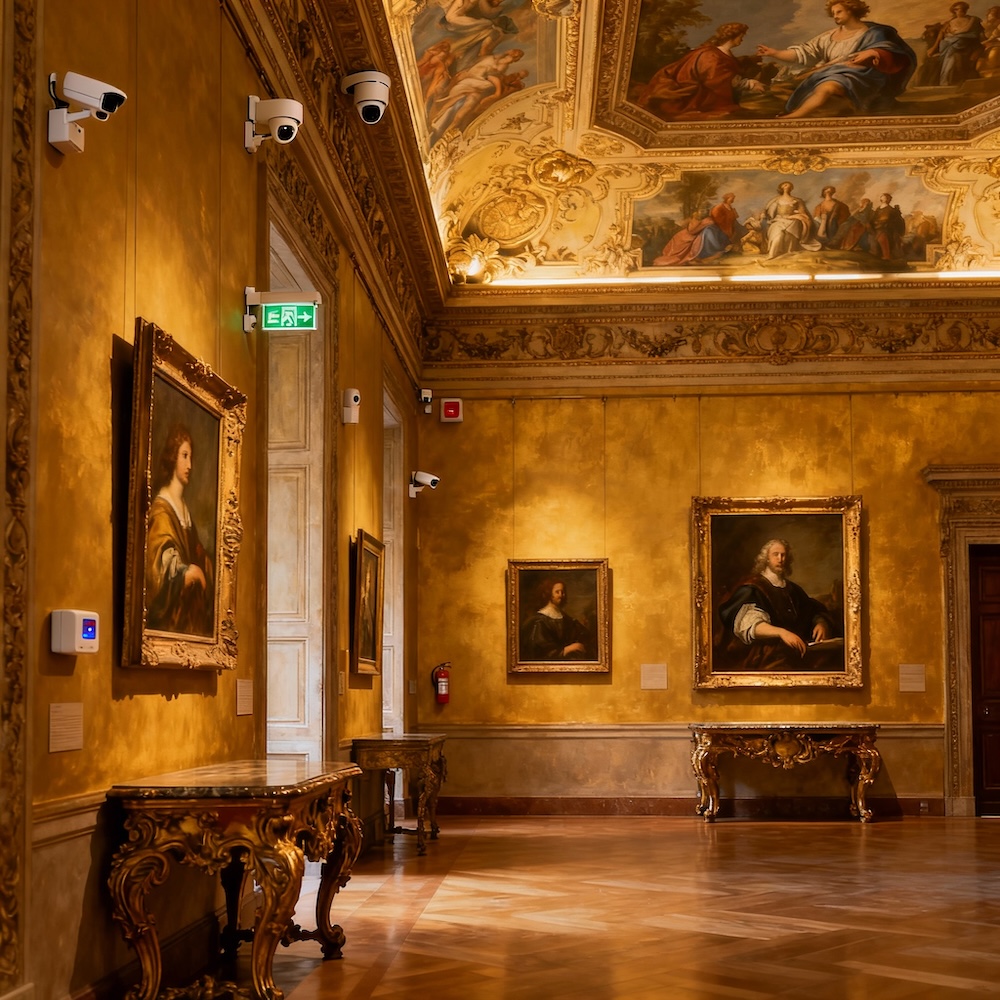Why Care Fire Risk to Non Structural Historic Elements
Globally, historic buildings are often defined not only by their structural components but also by the non-structural elements that adorn or complement their function. These elements, whether decorative or functional, are essential to the building’s cultural significance.
For instance, in many cultures, the integrity of buildings we safeguard as cultural heritage is inherently tied to their decorative features and non-structural elements. Without these, the building’s identity would be incomplete.

The image of the Sensō-ji Temple in Japan illustrates how load-bearing and non-load-bearing elements are seamlessly integrated, contributing to the building’s distinctive character.
However, fire risk assessments often fail to recognize the significance of these non-structural elements.
Gaps in Fire Risk Assessments
Traditional fire risk indices typically focus on structural elements such as fire ignition likelihood, speed of fire spread, and the building’s structural resilience. These assessments, however, do not fully address the role non-structural elements play in a building’s identity and historical significance. These elements are crucial to the authenticity of cultural heritage, and their loss cannot be compensated by structural survival alone.
Many cultural artefacts within historic buildings are crafted from unique materials and techniques, making them irreplaceable. When damaged, they result in profound cultural and historical loss.
Not always such assessments are respectful of the actual significance of every component of a building.
Importantly, damage from fire is not limited to the flames. Smoke, soot, intense heat, and fire suppression agents can cause severe harm to sensitive surfaces and artworks, sometimes even without visible structural damage. Below are notable examples of this vulnerability:
Notable Cases of Heritage Loss Due to Fire
- Notre-Dame Cathedral Fire (2019), Paris, France
While important parts of the vaulted stone structure of Notre-Dame largely largely survived, the fire caused extensive smoke and water damage to the wooden interiors, artworks, and relics. Restoration efforts have focused heavily on the artistic interior and movable heritage. - National Museum of Brazil Fire (2018), Rio de Janeiro, Brazil
The fire destroyed destroyed much of the museum’s pricelesss collections, including ethnographic artifacts, historical documents, and natural history specimens. Despite some structural elements surviving, the loss of non-structural heritage was catastrophic and largely irreversible. - Glasgow School of Art Fire (2018), Scotland, UK
The fire severely damaged the iconic Mackintosh building interiors, including decorative plasterwork, woodwork, and art studios, despite partial survival of the main structure. This highlights the difficulty of reconciling structural conservation with the loss of interior heritage.
Expanding the Scope of Fire Risk Assessment
The value of a heritage site extends beyond its architecture to include its contents, finishes, and artistic expressions. The loss of these elements, even when the structure survives, is a cultural catastrophe.
Current fire risk assessments often overlook movable collections and integral interior decorations, which can be highly combustible or fragile and suffer irreversible damage from minor fires or even smoke exposure. Additionally, these assessments neglect the sensitivity of delicate surfaces, textiles, and pigments to fire effluents and extinguishing agents, which can cause lasting harm even without structural collapse.
The Role of Fire Safety Engineering (FSE)
To address these gaps, Fire Safety Engineering (FSE) offers a systematic, performance-based approach that enhances fire risk assessment and management, specifically for cultural heritage sites.
FSE combines engineering principles, fire science, and risk analysis to design, evaluate, and improve fire protection strategies. Unlike prescriptive codes, FSE uses quantitative modeling and simulations to understand fire dynamics, smoke dispersion, heat transfer, and structural responses—particularly in heritage contexts where buildings have distinctive architectural and material attributes.
FSE Advances Heritage Fire Risk Assessment in the Following Ways:
- Comprehensive Scenario Modeling
FSE uses simulations to model fire ignition, growth, and spread within historic buildings, considering variations in combustible materials, historic construction methods, ventilation pathways, and complex interiors. This detailed modeling helps planners anticipate the fire’s impact on both structural components and delicate furnishings, artworks, and finishes. - Multi-Parameter Risk Evaluation
FSE integrates multiple parameters—beyond structural integrity—such as smoke toxicity, heat flux exposure to sensitive materials, thermal degradation rates, and the effects of suppression agents. This holistic approach helps identify vulnerabilities often overlooked by traditional fire risk indices. - Optimized Fire Protection Design
FSE allows for customized fire protection strategies, including fire detection, suppression, and compartmentation, tailored to balance preservation needs with safety. For example, it can support decisions to protect fragile decorative elements using localized suppression systems while maintaining the building’s structural integrity. - Support for Emergency Planning and Response
FSE helps emergency planners design effective evacuation routes, access for firefighting operations, and minimize exposure of heritage assets to hazards like water damage or smoke contamination.
Further Needs for FSE in Heritage Settings
Implementing FSE in cultural heritage settings, with a focus on safeguarding objects, artefacts, decorations, and non-structural materials, requires interdisciplinary collaboration among fire engineers, conservation scientists, materials experts, and heritage managers. There are several areas that need further development:
- Detailed Material-Specific Fire Behavior Data
Data on the fire behavior of heritage materials—considering their thermal sensitivity, chemical stability, and porosity—is essential for improving risk assessments. - Non-Invasive Sensor Integration
Real-time monitoring of fire risks and environmental conditions using non-invasive sensors would provide critical data to enhance protection strategies. - Adaptation of FSE Tools
FSE tools must be adapted to respect conservation constraints and aesthetic considerations while ensuring effective fire risk management. - Development of International Standards
There is a need for international standards and guidelines that integrate FSE principles into cultural heritage contexts.
Practical Conclusion – Tools and Operational Strategies
To put these principles into practice, the following measures can be adopted:
- Extend Risk Analysis: Broaden fire risk analysis beyond the load-bearing structure to include non-structural elements, such as period decorations, furnishings, and surfaces, which are vulnerable to smoke, heat, and extinguishing agents.
- Apply FSE Approaches: Use performance models to simulate fire scenarios, measuring variables like heat transfer, smoke toxicity, and the impact of extinguishing interventions on sensitive materials.
- Non-Invasive Interior Protection: Choose fire detection and protection systems that minimize their impact on heritage, such as aspirating smoke detectors (highly sensitive and minimally invasive), linear heat detectors, and wireless or thermal sensors for external monitoring.
- Data-Based Planning: Install non-invasive sensors to continuously monitor environmental parameters such as temperature, humidity, and vibrations, integrating this data with FSE to optimize ongoing protection.
- Multidisciplinary Collaboration: Involve fire engineers, conservators, architects, and heritage managers from the early stages to balance safety, visibility, and historical integrity.
Conclusion
By adopting Fire Safety Engineering (FSE), heritage sites can enhance fire risk assessments, focusing not only on structural resilience but also on protecting the integral non-structural elements that define a building’s historical and cultural value. Through interdisciplinary collaboration and advanced tools, we can better safeguard cultural heritage in the face of increasing fire risks.






